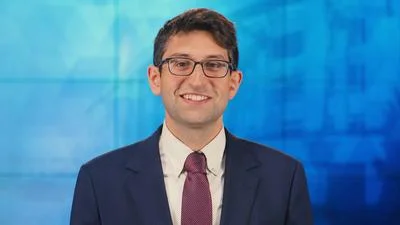WASHINGTON, DC - The Energy Subcommittee, chaired by Rep. Fred Upton (R-MI) held its fifth hearing as part of the committee’s ongoing ‘Powering America ’ series. Today’s hearing provided members an opportunity to examine the evolving role of the consumer in electricity systems.
#SubEnergy Chairman Upton takes notes ahead of today’s hearing
“Consumers are beginning to expect a certain level of control, convenience and choice. No longer dependent on one centralized generation source, consumers, or “prosumers" are choosing to generate their own energy and sell the surplus power back to the electric grid," said #SubEnergy Chair Upton. “Behind-the-meter energy storage lets consumers store electricity for later use. Intelligent energy technologies enable consumers to monitor and manage their energy consumption."
Arvin Ganesan, Vice President for Federal Policy at Advanced Energy Economy, spoke to the increasingly active role consumers have within the grid, commenting, “More consumers are increasingly exercising choice and control over their energy needs, whether that means purchasing solar panels for their rooftop, charging electric vehicles in their garages at night, or managing their household energy consumption from their phone that is connected to a smart thermostat. Customers are now active participants in the grid, making it much more dynamic. Consumers are driving this change, and federal policy must recognize the increasing role of the consumer in the grid."
Val Jensen, Senior Vice President of Customer Operations, ComEd, discussed their new utility business model for the modern consumer, stating, “Here at ComEd, we’re initiating our delivery system’s shift from today’s pipeline architecture - moving central-station power across wires to customers at the other end - to a platform architecture, which is the business of the 21st century. This new model is more decentralized, distributed, and democratic. Under this model, the utility will move from energy delivery democratization, using our infrastructure to create a market that customers can access to buy and sell and energy services. Utilities would then be compensated with fees on transactions and charges for services they provide."
Witnesses listen to member opening statements
In his questioning, full committee Chairman Greg Walden (R-OR), asked the panel of witnesses, “Are the markets working? Are they serving their intended purpose? And what is it we could do, or should do, if they’re not?" To which Mr. Ganesan replied, “The one point I would make, for a role for this committee, is to embrace competitive markets, which you have. We embrace it and I think that the role of this committee and FERC is to ensure that all the competitive markets of the United States do not have a technology bias. The RTOs set outcomes and let the markets and technologies come in to fill how to get to that outcome."
Karen Butterfield, Chief Commercial Officer at Stem, Inc., discussed Stem’s work in providing innovative technologies to consumers, testifying, “For our customers, we provide storage-as-a-service based on a monthly fee with no upfront payment. We finance the hardware so that customers only pay a subscription, making energy storage a cost-saving operating expense rather than a capital investment. Our software then automatically charges and discharges the storage to produce the most savings by providing energy from the battery to the building rather than from the grid. Customers save money from day one and can often save up to two-to-three times what they pay each month in subscription fees."
Monica Lamb, Director of Regulated Markets at LO3 Energy, also highlighted LO3’s work to bring innovative technology to the grid, commenting, “This community energy marketplace in Brooklyn - which can be replicated in hundreds more communities around the U.S. and globally - will create a decentralized, peer-to-peer energy network that also coordinates with the broader power grid. By sending appropriate price signals for energy and energy services, these locally optimized networks engage all market participants to deploy distributed energy resources and infrastructure upgrades in the most efficient manner."
Chairman Upton concluded, “These energy technologies will enhance the reliability, security, and resiliency of our nation’s electric grid - particularly in the event of extreme weather events. The key to ensuring the continued growth of technological innovation is competitive and well-functioning energy markets, which is an issue the committee will continue to explore going forward."
Information on the October 3 and October 5 hearings will be available here as it is posted.





